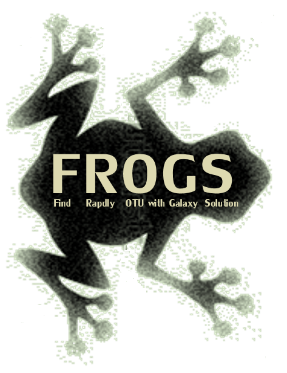
What it does
Filter the OTUs of an abundance table according :
-The abundance and the occurence of OTUs: presence in samples, OTU size and maximum number of OTUs.
-The taxonomic affiliation produced by RDP: rank and bootstrap.
-The taxonomic affiliation produced by Blast: e-value, percentage of identity, percentage of coverage and alignment length.
-Contamination: phiX a control added in Illumina sequencing technologies.
Inputs/outputs
Inputs
Sequence file:
The sequences (format FASTA).
Abundance file:
The abundance of each OTU in each sample (format BIOM).
Outputs
Sequence file (sequences.fasta):
The sequences after filtering (format FASTA).
Abundance file (abundance.biom):
The abundance after filtering (format BIOM).
Excluded file (excluded.txt):
The list of the OTUs deleted by filters (format TSV).
Summary file (report.html):
The filters and the number of removed sequences (format HTML).
How it works
The OTUs kept are the ones that satisfy into the BIOM input file the thresholds specified by the user.
The BIOM abundance table and the fasta file are written again according to the OTUs kept.
The OTUs discarded are listed in the excluded file.
| Steps | description |
|---|---|
| 1 | Except the filter to select the n most abundant OTUs, all the selected filters are run independently. For each filters an list of the OTUs to remove is generated. |
| 2 | All the OTUs tagged to remove by at least one filter are removed. |
| 3 | If the filter to select the N most abundant OTUs is filled it is applied. |
Advices
Please check that the input fasta file and the input BIOM file correspond to the same OTUs.
Examples for the filters on abundance and occurence of the OTUs :
-To keep the filters that are present in 5 samples, fill the corresponding field with "5".
-To display the 20 biggest OTU, fill the corresponding field with "20".
-To filter on abundance, we advise you to specify 0.005%. It seems to be the optimal threshold (Bokulich *et al*, 2013 ).
If you use "FROGS Filters" before "FROGS Affiliation", the filters on RDP and Blast are useless.
Contact
Contacts: frogs@inra.fr
Repository: https://github.com/geraldinepascal/FROGS
Please cite the FROGS Publication: Escudie F., Auer L., Bernard M., Cauquil L., Vidal K., Maman S., Mariadassou M., Hernadez-Raquet G., Pascal G., 2015. FROGS: Find Rapidly OTU with Galaxy Solution. In: The environmental genomic Conference, Montpellier, France, http://bioinfo.genotoul.fr/fileadmin/user_upload/FROGS_2015_GE_Montpellier_poster.pdf
Depending on the help provided you can cite us in acknowledgements, references or both.